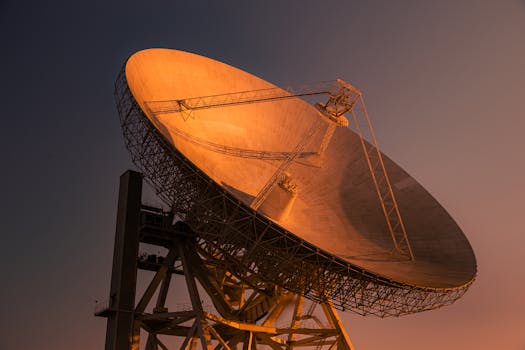Satellite Telecommunications 2023: Key Developments and What They Mean for the Industry

Satellite Telecommunications 2023: Key Developments and What They Mean for the Industry
Satellite Telecommunications 2023 has been a remarkable year for the satellite telecommunications industry, marked by significant developments that are transforming the landscape of global communication. Satellite Telecommunications 2023 is at the forefront of these advancements, driving innovation and growth in the sector. As we delve into the key developments of 2023, it becomes clear that the industry is on the cusp of a revolution, with far-reaching implications for businesses, governments, and individuals alike.
The increasing demand for satellite telecommunications services has been fueled by the growing need for reliable, high-speed connectivity in remote and underserved areas. The launch of new satellite constellations, such as OneWeb and Amazon’s Kuiper Systems, has expanded the availability of satellite broadband services, enabling more people to access the internet and stay connected. Furthermore, the development of new satellite technologies, including advanced propulsion systems and sophisticated antenna designs, has improved the efficiency and capacity of satellite communications.
Advancements in Satellite Technology
One of the most significant developments in satellite telecommunications 2023 has been the advancement of satellite technology itself. The introduction of new materials and manufacturing techniques has enabled the production of smaller, lighter, and more powerful satellites. This, in turn, has reduced the cost of launching and operating satellites, making space-based communications more accessible to a wider range of organizations and individuals. Additionally, the development of reusable launch vehicles, such as SpaceX’s Falcon 9, has significantly lowered the cost of access to space, paving the way for more frequent and affordable satellite launches.
The integration of artificial intelligence (AI) and machine learning (ML) into satellite systems has also been a key development in 2023. AI-powered satellites can now autonomously navigate, communicate, and adapt to changing environmental conditions, enhancing their overall performance and reliability. Moreover, the use of ML algorithms has improved the analysis and interpretation of satellite data, enabling more accurate and timely insights into weather patterns, crop health, and other critical factors.
Expanding Applications of Satellite Telecommunications
The applications of satellite telecommunications have expanded significantly in 2023, with the technology being used in a wide range of industries, including maritime, aviation, and emergency response. Satellite communications have enabled the creation of more efficient and reliable logistics networks, allowing businesses to track and manage their assets in real-time. In the maritime sector, satellite communications have improved navigation, safety, and security, while in aviation, they have enhanced air traffic management and passenger connectivity.
The use of satellite telecommunications in emergency response situations has also been a major development in 2023. Satellite-based communication systems have provided critical connectivity in the aftermath of natural disasters, such as hurricanes and wildfires, enabling first responders to coordinate their efforts and respond more effectively to emergencies. Furthermore, satellite telecommunications have played a vital role in search and rescue operations, helping to locate missing persons and provide medical assistance in remote and hard-to-reach areas.
Challenges and Opportunities Ahead
Despite the many advancements in satellite telecommunications 2023, there are still significant challenges to be addressed. The increasing proliferation of satellites in orbit has raised concerns about space debris, congestion, and the potential for collisions. To mitigate these risks, the development of more sustainable and responsible satellite operations is essential, including the implementation of debris removal systems and more efficient launch and deployment practices.
The future of satellite telecommunications holds much promise, with new technologies and applications on the horizon. The integration of satellite communications with other technologies, such as 5G networks and the Internet of Things (IoT), is expected to create new opportunities for innovation and growth. As the industry continues to evolve, it is likely that we will see the emergence of new business models, such as satellite-based data analytics and space-based cloud computing, which will further transform the landscape of global communication.



